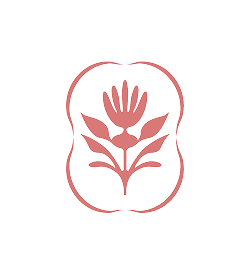Mummy Wrist Treatment
Motherhood is a beautiful yet physically demanding time. If wrist pain worsens when lifting your baby, changing nappies, or even scrolling your phone, you may have Mummy Wrist, also known as Mummy Thumb. This common condition, medically known as De Quervain’s tenosynovitis, affects the tendons at the base of the thumb. It’s often caused by repetitive lifting and awkward wrist positions in early motherhood. At Calyx, we provide expert, compassionate care to help you move with comfort and confidence again.
What Is Mummy Wrist?
“Mummy Wrist” (also known medically as De Quervain's Tenosynovitis) is caused by inflammation of the tendons at the thumb side of the wrist. It’s linked to repetitive lifting and awkward wrist positions, especially in early motherhood. If left unaddressed, it can lead to worsening pain and impact daily function.
Is This Safe for Me?
Yes, physiotherapy is a safe, evidence-based option for treating Mummy Wrist. Our assessments ensure that the treatment is tailored to your stage of motherhood, any underlying musculoskeletal issues, and your lifestyle needs.
Who Should Consider Mummy Wrist Treatment?
If you are a new mother or caregiver experiencing wrist pain, especially on the thumb side, that worsens with lifting or gripping, this treatment may help. We support women at any stage of postnatal recovery and provide care tailored to your needs. We also support women who are experiencing wrist pain outside of early motherhood. Click here to explore wrist pain in other life stages.
-
Do I Need a Referral?
No referral is needed. You can book directly with us. If needed, we’re happy to coordinate care with your OBGYN or GP.
-
Are There Any Conditions That May Prevent Me From Getting Mummy Wrist Treatment?
In rare cases, medical clearance may be needed before starting physiotherapy. This includes recent fractures, severe inflammatory conditions, or nerve compression. Our physiotherapists will assess your condition thoroughly and refer you to a doctor if needed to ensure safe and effective care.
Symptoms and Signs You May Benefit from Mummy Wrist Treatment
Common signs include:
- Pain on the thumb side of the wrist
- Swelling near the base of the thumb
- Difficulty gripping or lifting objects
- Sharp pain during baby-related tasks
- A catching or snapping sensation
These symptoms are often caused by tendon irritation from repetitive wrist and thumb movements. Many mothers first notice pain when lifting their baby, wringing cloths, or opening jars. If these signs are affecting daily tasks, early physiotherapy can help reduce pain, restore strength, and prevent long-term issues.
What Happens During Your Session
We begin with a detailed intake to understand your history, goals, and symptoms. Each session is tailored and focused on education, assessment, and gentle guided treatment.
-
Will There Be an Internal or External Assessment?
All assessments for Mummy Wrist are external. We examine thumb movement, grip strength, tendon inflammation, and posture.
-
Do I Need to Prepare or Bring Anything?
Please bring any splints or braces you’ve used, and wear short sleeves. If possible, a short video of an activity that triggers your pain can be helpful.
-
What Happens After the Session?
You’ll receive a personalised care plan, which may include manual therapy, splint advice, taping, and home exercises. Most clients report relief after the first session.
Techniques and Tools We May Use
- Manual therapy for tendon gliding
- Joint mobilisation
- Taping and bracing
- Postural correction
- Therapeutic ultrasound
- Strengthening and neuromuscular re-education
-
Is It Painful or Uncomfortable?
Treatment is designed to be gentle and progressive. Some discomfort may be felt during mobilisation, but it is never excessive.
-
How We Ensure Safety in Each Method
We prioritise your safety by tailoring techniques based on pain thresholds, postpartum healing stage, and activity level.
Your Progress and Results Over Time
-
How Soon Will I See Improvement?
Improvement depends on how early treatment begins. Acute cases often respond faster, while chronic or recurring pain may take longer. Some women feel better within a few sessions, but lasting recovery usually requires consistent care, activity changes, and guided exercises over several weeks. Your healing timeline is always personalised.
-
How Often Will I Need Sessions?
Most clients benefit from weekly sessions initially, then taper as symptoms improve.
-
Will I Need Maintenance Visits?
Mummy wrist is an overuse injury, so symptoms may return as your daily load shifts or increases. Maintenance visits offer preventive support by adjusting load management early and addressing small issues before they worsen. Many mums join our Regrounded After Birth programme or book one-to-one check-ins for continued care.
-
What Do I Need to Do at Home?
We’ll provide exercises, ergonomic advice, and baby-handling tips to prevent flare-ups.
Why Women Trust Calyx for Mummy Wrist Treatment
At Calyx, our physiotherapists specialise in women’s musculoskeletal care and understand the physical demands of motherhood. We create a safe, supportive space to recover with confidence. Trusted by mothers across Singapore, our care blends clinical expertise, evidence-based treatment, and a deeply compassionate approach.
Are Sessions Covered by Insurance?
Coverage for musculoskeletal physiotherapy varies by insurer and plan. Please check with your provider. We’re happy to provide detailed invoices to support any claims.
What Makes Calyx Different?
Expertise in postnatal wrist injuries. Holistic assessments including baby-carrying ergonomics. Seamless continuity of care within the Calyx team.
How Much Does It Cost?
We offer transparent session-based pricing. See price list.
Take the First Step Toward Relief
You don’t have to live with the pain of Mummy Wrist. Reach out today to schedule a consultation with our caring physiotherapy team in Singapore.



